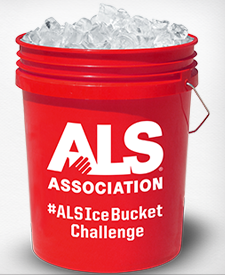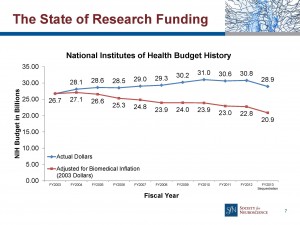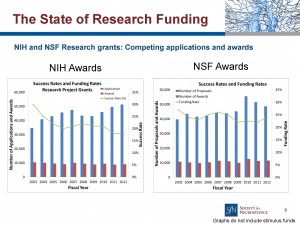This summer you couldn’t miss the videos of friends and celebrities dumping themselves with ice water and challenging others to do the same and/or donate to the ALS Association. Over 300 million people donated $100 million and counting to the ALS Association thanks to the viral ice bucket challenge (as of Aug 29th). Money donated to the ALS Association supports research for a cure for ALS, advocacy efforts, public education and outreach, and community services for those suffering form ALS. You can learn about ALS (Amyotrophic Lateral Sclerosis or Lou Gehrig’s Disease) in one fun cartoon by Dwayne Godwin & Jorge Cham.
While the outpouring of individual charity has been heartening, disease specific foundations don’t have the resources needed to fund research into cures on their own. To date the ALS Association has committed $99 million to support biomedical research on ALS compared to over $229 million invested by the NIH in ALS research in just the past 5 years. The NIH and other federal science funding agencies also have more consistent funding and the ability to strategically spend money on basic science research in addition to large scale clinical trials. As I’ve discussed before, the sequester, biomedical inflation, and flat funding to the NIH and NSF have decreased federal funding for biomedical science by ~20% since 2003.
So, keep supporting your favorite charities, but increase the chances that biomedical researchers find a cure by asking your elected officials to support continued investment in science. Call your representatives and ask them to support Senator Tom Harkin’s Accelerate Biomedical Research Act. This bill would increase NIH funding in 2021 to the level it would have been if funding had kept pace with inflation after 2003 ($46.2B).
Go here for Research!America’s easy contact form and email template supporting the Accelerate Biomedical Research Act. If you prefer to call your representatives you can find contact information here.



